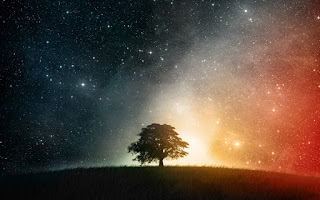Originally posted to the Pagan Blog Project 2013 as Week R
**Technical difficulties posting.Sorry!**
The longer nights give me more time to read and ponder; to examine my life and consider how I will make the changes that need to be made. The Irish call this time of contemplation the Place of Deep Indwelling. Like seeds placed in the rich, dark soil of Autumn which incubate, sending their roots deep into the earth and their leaves sun ward, I work at regeneration and revival of my spiritual life.
**Technical difficulties posting.Sorry!**
The longer nights give me more time to read and ponder; to examine my life and consider how I will make the changes that need to be made. The Irish call this time of contemplation the Place of Deep Indwelling. Like seeds placed in the rich, dark soil of Autumn which incubate, sending their roots deep into the earth and their leaves sun ward, I work at regeneration and revival of my spiritual life.
Building a personal spiritual practice takes time: time to read and digest. Time to study and put into practice. To see how well things work- and what doesn't work.
I only keep what resonates within me. There are many things which I find interesting, but I know are not for me. Some things which were beneficial early in my spiritual formation are discarded when they no longer make sense or no longer work. When I first came to Paganism, I had no teacher other than the natural order. I developed rituals and spells on my own based on what I felt. Later, when I was introduced to a formal occult tradition, there were many rules and guidelines to learn and follow as a member of a coven. I did so for a year and a day, and several years more as I achieved the tradition's degrees. I studied esoteric traditions along side the courses that lead to my ordination into a mainstream Christian denomination. I saw nothing that contradicted one or the other, until I took a sabbatical and began discernment...and then I began 'cleaning house', sweeping away those things that no longer served the greater good or grew who I was becoming.
Rules are needed to keep chaos in check,but too many rules create their own disorder and confusion. I kept the basics that made sense: the belief in the Divine and the Source of the Universe; maintaining a daily devotional practice; practicing the tried and true methods of spellworking and magick. The rest I allowed to gradually fall away: rigid belief in specific orders of worship; preconceived notions of Divine expectations; rules I was told needed to be followed to the letter, lest dire consequences result. The less I participated in groups, the less my practice was influenced by others.
I love pomp and liturgy, but they have their place. I began this path listening to the voice of the Divine through Nature, without labels, degrees, or roles to execute. In the past year I have returned to the simple practice of allowing the gods to guide my worship and magick. The result has been a relationship with the Divine that is more conversational than just me kneeling in the temple in supplication. I can cast my solitary circle whenever it feels right to do so-with or without the tools and assorted accouterments. For me, this has resulted in a less pretentious, more genuine-feeling form of the Craft.
I know in my heart and with my head that I will never return to the formal mainstream religion I left. Not that it was wrong-just that I doesn't fit in the plan for my own spiritual integration and growth. The same can be said for the esoteric traditions I have studied: I am keeping what feels right and applies to where I am currently in my understanding of the Craft. I may never celebrate in those circles again, but I will give credence to their contribution to my solitary practice.
Like the salamander or the Phoenix that continuously regenerates, I rise again, content that my spirit is reborn anew.
















